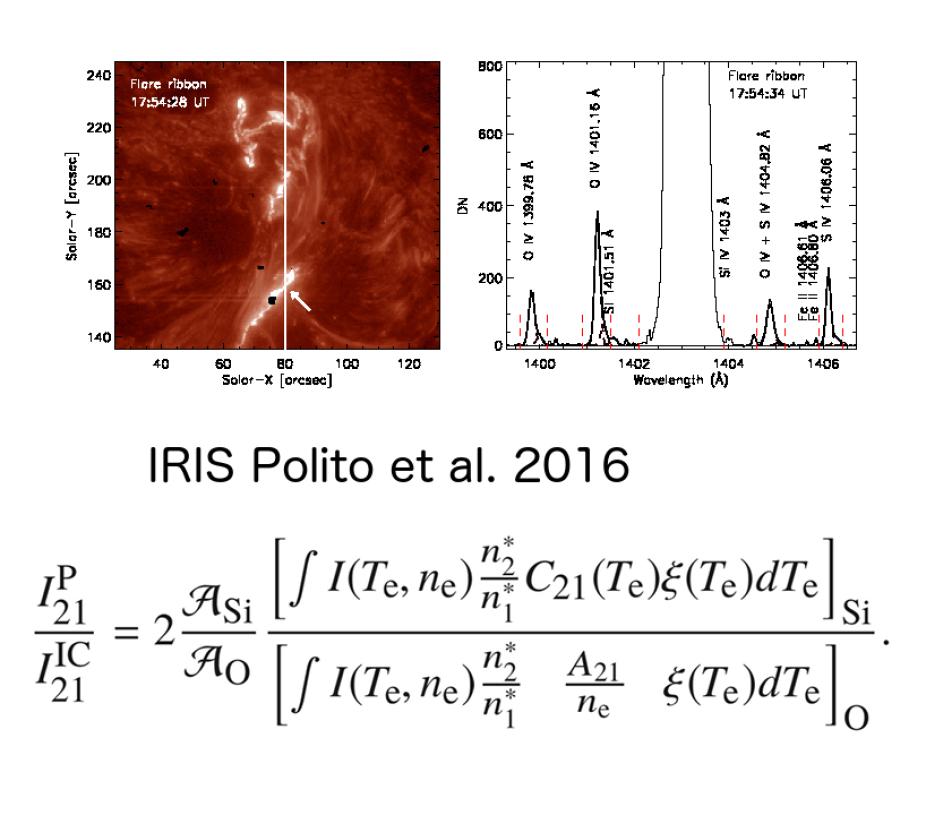Publication Name: MNRAS; First HAO Author's Name: Philip Judge

Emission line data from IRIS are shown in the top panel. The lower panel lists an expression for the ratio of the emission lines shown of SI and O, under a minimal number of assumptions which often exceed the number of independent data points.
Philip Judge states that the interpretation of emission lines formed in large astrophysical plasmas such as the solar atmosphere faces many challenges. Relatively simple line-ratio estimates of physical parameters, while appealing, are heavily laden with assumptions. In practical cases, some critical assumptions are neither defensible from first principles, nor testable by experiment. Free parameters and functional forms must be defined, whose numbers of degrees of freedom exceed the number of independent data points. These issues are illustrated in the particular case of using lines of Si IV and O IV formed in the solar transition region, observed for decades, most recently using the IRIS mission. The problems highlighted are in addition to well-known problems of mathematical ill-posedness.